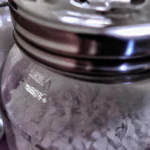Gasoline freezing is a common problem during winter months, especially in regions with extreme temperatures. Gasoline freezes at -100ºF or below, depending on its mixture of liquid components. However, if the temperature inside a car’s tank is not that cold, gasoline won’t freeze and can be used without any problem.
On the other hand, diesel has a higher freezing point and could run into freezing problems, which is why winter diesel blends are sold. While cold temperatures won’t harm a low gas tank, it may cause the gasoline to break down and its components to separate, with the heavier molecules collecting together. This process results in a phenomenon called “gelled fuel”, where the paraffin wax content solidifies and leads to engine malfunction.
It is also important to note that any condensation or water vapor in the tank or line could freeze, hurting the car and inhibiting its ability to function. Additionally, keeping the tank filled below half-full could shorten the fuel pump’s life. Thus, it is necessary to take the necessary precautions to avoid these issues and ensure that the vehicle’s engine runs smoothly, even in extreme weather conditions.
Table of Contents
Definitions of Gas Freezing and Factors Affecting Freezing Point
Gas freezing is a natural process where a substance transforms from a gas state into a solid state. The temperature at which the transformation occurs is called the freezing point. This usually happens when the intermolecular forces of attraction between the atoms or molecules making up a gas become so strong that they force the gas particles to slow down and take on a stationary position. Once the particles stop moving, they start to form a solid.
Several factors can impact the freezing point of a substance, such as:
- Pressure: the higher the pressure, the higher the freezing point of a gas.
- Mixtures and organic compounds: their freezing point is typically lower than their melting point.
- Composition: as gas begins to freeze, the solid it forms at the start has a different composition from that of the liquid, slowly changing the composition of the remaining liquid and lowering the freezing point.
When it comes to types of fuel, different fuels have different freezing points. For instance, propane and butane are popular fuels used in gas grills and stoves. Propane has a lower freezing point (-306.4°F) than butane (-241°F), which means it can maintain its gaseous state even at lower temperatures than butane, making it more suitable for outdoor use in colder climates.
Freezing Points of Different Fuel Types
If you’re wondering about the freezing points of different fuel types, we’ve got you covered. Here’s a quick summary:
- Jet-A1: freezing point of -47°C
- Jet A: freezing point of -40°C
- Jet B: freezing point of -50°C
- TS-1: freezing point of -50°C
- RP-1: freezing point of -60°C
- RP-2: freezing point of -50°C
- RP-3: freezing point similar to Jet-A1
Fuel freezing is a genuine concern for pilots, particularly on long-haul flights over the North Pole at high altitudes in winter. In January 2008, British Airways Flight 38 crashed just short of the EGLL/Heathrow airport runway after flying from Beijing, China. The plane was cruising between FL350 and FL400 with outside air temperatures (OATs) reported to be between -65 and -74°C. While the fuel itself didn’t freeze, it did get cold enough for ice crystals to form in the fuel system.
Knowing the freezing point of fuel types is critical in preventing such mishaps. For instance, Jet-A1 has a better freezing point than Jet B and RP-1, which means it stays liquid at colder temperatures. Similarly, RP-1 has the lowest freezing point of -60°C, whereas RP-3 shares the same freezing point as Jet-A1. TS-1 and Jet B both freeze at temperatures of -50°C.
To sum it up, different fuel types have different freezing points. It is essential to be aware of these points to avoid fuel freezing and consequent accidents, particularly during winter flights over the North Pole.
Effects of gas freezing on engines and vehicle performance
If you live in a cold climate, you know that freezing temperatures can affect your vehicle’s fuel economy and performance. But how does gas freezing specifically impact engines and vehicle performance?
Gas freezing can affect engines and vehicle performance in cold weather. When temperatures drop below freezing, gasoline can become thicker and form ice crystals. This can clog fuel lines, filters, and injectors, preventing proper fuel delivery to the engine. If the engine doesn’t receive enough fuel, it may run roughly or even stall.
Fuel economy tests show that a conventional gasoline car’s gas mileage in city driving is roughly 15% lower at 20°F than it would be at 77°F. It can drop as much as 24% for short (3- to 4-mile) trips. Cold weather effects can vary by vehicle model. However, expect conventional gasoline vehicles to suffer a 10% to 20% fuel economy loss in city driving and a 15% to 33% loss on short trips. The effect on hybrids is typically greater – fuel economy dropping about 30% to 34% under these conditions. For hybrids, fuel economy typically decreases by 20% to 40% in city driving and 25% to 45% on short trips.
For electric vehicles (EVs), fuel economy can drop roughly 39% in mixed city and highway driving, and range can drop by 41%. About two-thirds of the extra energy consumed is used to heat the cabin. When the cabin heater is not used, EV fuel economy is 8% lower at 20°F than at 75°F. Driving range is about 12% lower. This is because the battery’s performance is reduced in cold temperatures, and the heater uses more energy, draining the battery faster.
- To summarize:
- Gasoline vehicles: expect a 10% to 20% fuel economy loss in city driving and a 15% to 33% loss on short trips.
- Hybrids: fuel economy typically decreases by 20% to 40% in city driving and 25% to 45% on short trips.
- Electric vehicles: fuel economy can drop roughly 39% in mixed city and highway driving, and range can drop by 41%. Driving range is about 12% lower.
So, taking proper measures to prevent gas freezing and keep your vehicle running smoothly in cold weather is essential. In the coming paragraphs, we’ll take a closer look at what you can do to prevent gas freezing and minimize the effects of cold weather on your vehicle’s fuel economy and performance.
Preventing Gas Freezing in Vehicles
If you want to prevent gas from freezing in your vehicle, the best way to do so is by adding isopropyl gas antifreeze or regular isopropyl alcohol to your gas tank. This preventive measure is essential, especially during extreme cold weather conditions.
Isopropyl gas antifreeze/ regular isopropyl alcohol works by lowering the freezing point of water, which is commonly present in the gas. Adding about 12 oz of antifreeze or alcohol per 10 gallons of gas can prevent gas from freezing solid in the gas tank or fuel lines. However, it is important to know that gas can still crystallize at extreme temperatures, which may lead to fuel filter clogging.
Extreme cold weather condition is more likely to affect your vehicle’s battery, which can cause the alternator and starter not to work. For this reason, it is highly recommended to carry jumper cables at all times. Additionally, having a cold-weather battery with high cold-cranking amp levels is an excellent preventive measure to avoid being stranded in the cold.
- Isopropyl gas antifreeze/regular isopropyl alcohol lowers the freezing point of water in gas.
- Carrying jumper cables at all times can help start a vehicle with a dead battery during extremely cold weather conditions.
- A cold-weather battery with high cold-cranking amp levels can ensure your vehicle’s battery functions optimally during extreme cold weather.
Signs and Symptoms of Gas Freezing in Vehicles
If you live in areas with extremely low temperatures, gas lines can freeze in your vehicle. When the gas expands, it can clog the fuel system causing your vehicle to stop functioning. Knowing the signs and symptoms of gas freezing can help you avoid this problem.
- Difficulty starting your engine: When trying to start your vehicle in cold weather, it may take several attempts due to frozen gas lines.
- Sputtering engine: If you start the engine but it sputters and stalls, it may be a sign that the gas lines are frozen.
- Decreased power: Frozen gas lines can also cause a decrease in power while driving or accelerating.
- Foul odor: If you smell a foul odor coming from the vehicle’s exhaust, it may indicate that the fuel is not burning correctly due to frozen gas lines.
- Gas gauge is not functioning: Frozen gas lines can affect the reading of the gas gauge, making it appear as though there is more fuel in the vehicle than there actually is.
If you notice any of these signs and symptoms, it is crucial to take action. Continuing to drive a vehicle with frozen gas lines can cause severe damage to the engine and fuel system.
In areas with frequent sub-zero temperatures, it is essential to regularly maintain your vehicle’s fuel system, such as draining your gas tank and adding antifreeze to the fuel. Parking your car in a heated garage or using a block heater can also prevent gas lines from freezing. By taking these precautions, you can avoid any dangerous situations while driving in cold weather.
How to Handle Gas Freezing in Vehicles
Gasoline combines many elements with different freezing points, making it difficult to pinpoint a specific temperature at which it will freeze. However, fuel usually freezes at temperatures between -40°C and -200°C. When a gas line freezes, it can cause issues with starting the car, the engine sputtering, or the car to abruptly stop.
One solution to fixing a frozen gas line is to bring the vehicle into a warm location like a garage and try to warm it up. Another option is to cover the engine hood with a thick blanket and hang a drop light on it. After the engine is fired up, it should be running for a while to help keep it unfrozen. Using fuel additives such as gas line antifreeze can be an effective solution too. The antifreeze contains an alcohol content that helps to unfreeze the gas line.
Lastly, prevention is key. To keep gas lines from freezing, keeping the gas tank full and using a block heater to keep the engine warm is important.
- Bring the vehicle into a warm location like a garage to warm it up.
- Cover the engine hood with a thick blanket and hang a drop light on it.
- Use fuel additives such as gas line antifreeze to unfreeze the gas line.
- Keep the gas tank full and use a block heater to keep the engine warm to prevent gas lines from freezing.
Regions More Prone to Gas Freezing: Understanding the Impact of Cold Weather on Gas Supply Chains
Gas supply chains can freeze up when cold weather strikes, raising questions about the fuel’s reliability under tough conditions. The sudden temperature drops experienced in some regions can severely disrupt gas production and transportation, leading to shortages and price spikes. For example, the week of February 14, 2021, saw gas production in Texas fall by 45% due to freeze-offs, leading to a nationwide drop in production of 20%, according to data from the Energy Information Administration (EIA). These outages can also contribute to energy shortfalls, as seen in Texas during the same period.
While cold weather can affect gas supply chains in many regions, some areas are particularly susceptible to freeze-offs. Regions that experience frequent dips in temperature, such as those located in the northern parts of the United States and Canada, are more prone to gas freezing. However, specific factors such as the depth and age of wells, the type of gas pipelines, and the amount of insulation applied can also play a crucial role in determining whether or not freeze-offs occur.
Preventing freeze-offs can be an expensive and time-consuming process. According to estimates from the Gas Technology Institute, winterizing a single gas well can cost over $34,000, with an additional $6,800 in annual operating costs. Many gas companies have implemented protocols for winterizing their wells and pipelines to cope with this issue, such as installing heaters and insulation. In addition, they may also implement measures to protect against sudden demand spikes, such as stockpiling gas reserves during colder months.
In conclusion, gas freezing is a significant challenge for gas supply chains in colder regions, potentially leading to shortages and energy shortfalls. While preventative measures such as winterizing wells and pipelines can be costly, they are crucial for maintaining consistent production and avoiding price spikes. By understanding the factors contributing to freeze-offs and implementing effective solutions, gas companies can continue to meet demand even during the coldest winters.




